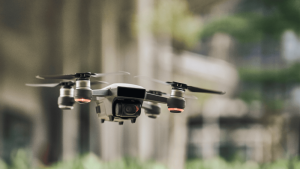Drones are revolutionizing logistics and goods distribution, especially in remote areas where conventional infrastructures present limitations. Companies like Aviant and Zipline have developed advanced autonomous drone delivery systems, offering innovative solutions for sectors such as healthcare, commerce, and emergency management.
Aviation Regulations and Applicable Legislation
The operation of autonomous delivery drones is subject to strict regulations to ensure safety and integration into airspace.
- Implementing Regulation (EU) 2019/947: Establishes requirements for BVLOS operations and controlled airspace.
- Delegated Regulation (EU) 2019/945: Regulates the manufacturing and commercialization of drones.
- U-Space (EU 2021/664): Regulatory framework for the integration of drones into European airspace.
- AESA (Spain) RD 517/2024: Requirements for operations in urban environments and restricted areas.
Key Factors in Implementing Delivery Drones
Selecting a drone delivery system requires considering several factors:
- Autonomy and Flight Range: Models like those from Aviant can operate over long distances with VTOL technology.
- Payload Capacity: Some drones support lightweight packages, while others can transport up to 10 kg.
- Navigation Systems: Integration with advanced GPS and real-time obstacle avoidance.
- Regulations and Certification: Compliance with SORA and specific authorizations.
Key Applications and Legal Requirements
Medical Supplies in Remote Areas
- Reducing delivery times for blood, vaccines, and medications.
- Success cases in Africa and pilot projects in Europe.
- Requires public health authorization and BVLOS certification.
E-Commerce Delivery
- Companies like Amazon and Wing have initiated pilot tests.
- Strict regulations for urban operations and remote identification requirements.
Resource Distribution in Disasters
- In emergencies, drones can rapidly provide essential supplies.
- Planning under civil protection regulatory frameworks.
Summary
Autonomous delivery drones are the future of logistics in remote and urban areas. However, their implementation requires regulatory, technological, and logistical adaptations to ensure safe and efficient operations.
At GRUPO UAS, we are actively exploring partnerships and opportunities to drive this technology in other countries and states, facilitating adaptation to local regulations and developing innovative solutions.
If you want to learn more about how drones can transform logistics, contact us!



